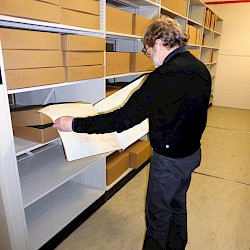Valuation Rolls
Valuation rolls are records of property taxation by local authorities. Beginning in 1855, they were based on rental value up to 1989, when rates for domestic property were abolished and replaced by a charge usually known as the Poll Tax. This system was in turn replaced by one based on capital value.
 For many years this was among the most important documents produced by the local authority, since the rates were the main source of revenue for it. It shows in the careful handwriting, and the high quality paper.
For many years this was among the most important documents produced by the local authority, since the rates were the main source of revenue for it. It shows in the careful handwriting, and the high quality paper.
Valuation rolls sound very dull – but they are full of useful information for researchers. They contain lists of owners of property and of tenants and occupiers, and the annual value and rent of the property. For family historians, the valuation rolls complement the more comprehensive census records. They were made up yearly, and while they show only heads of household, they can reveal when families moved from one property to another. And unlike the census, the rolls are available for many years after 1911.
They also reveal something else about the households listed in them. The early rolls show that Shetland was a society of tenants, not of small proprietors (as is sometimes imagined). Approached with patience the valuation rolls can offer useful insights into the Shetland society of the past.